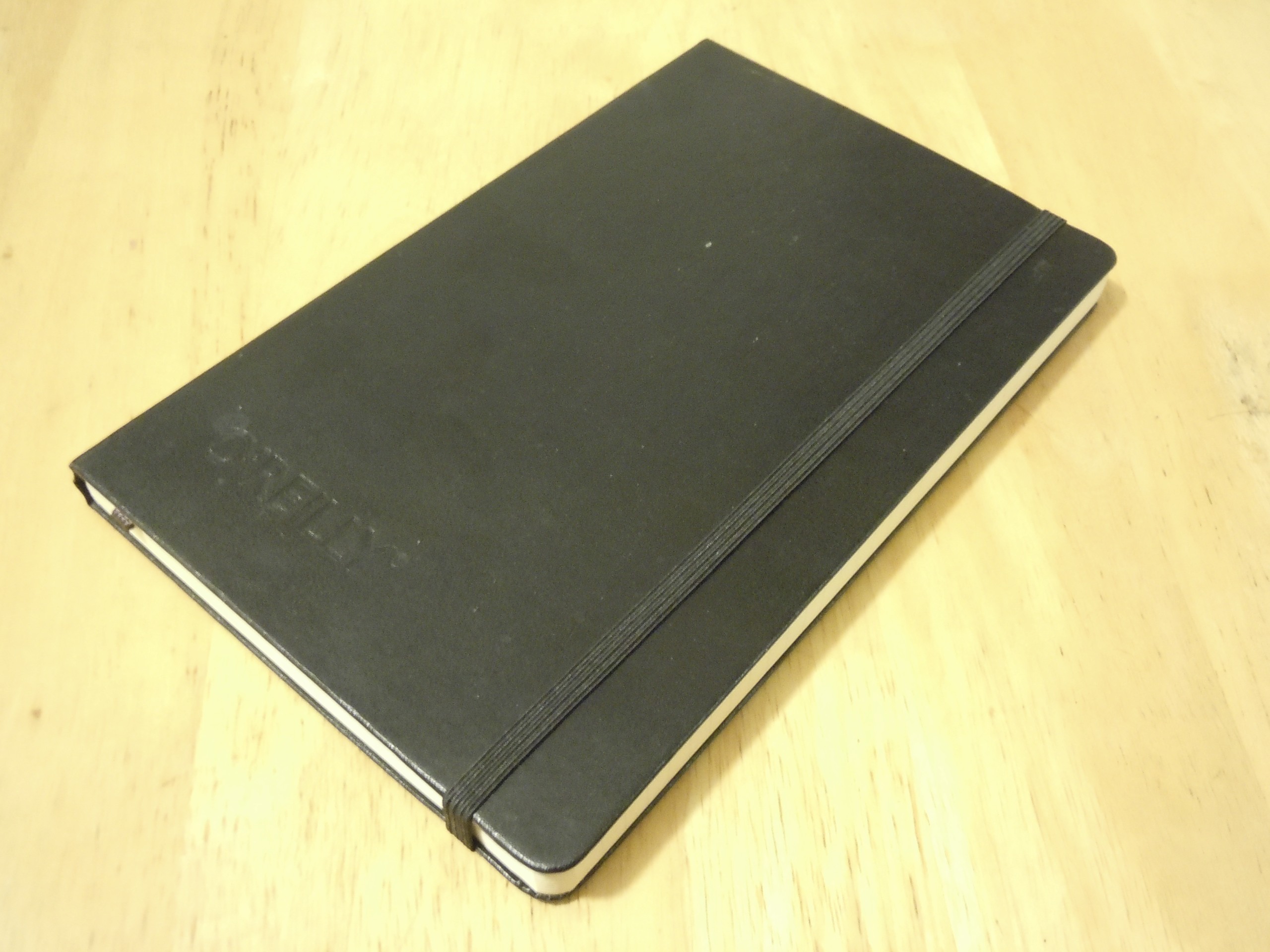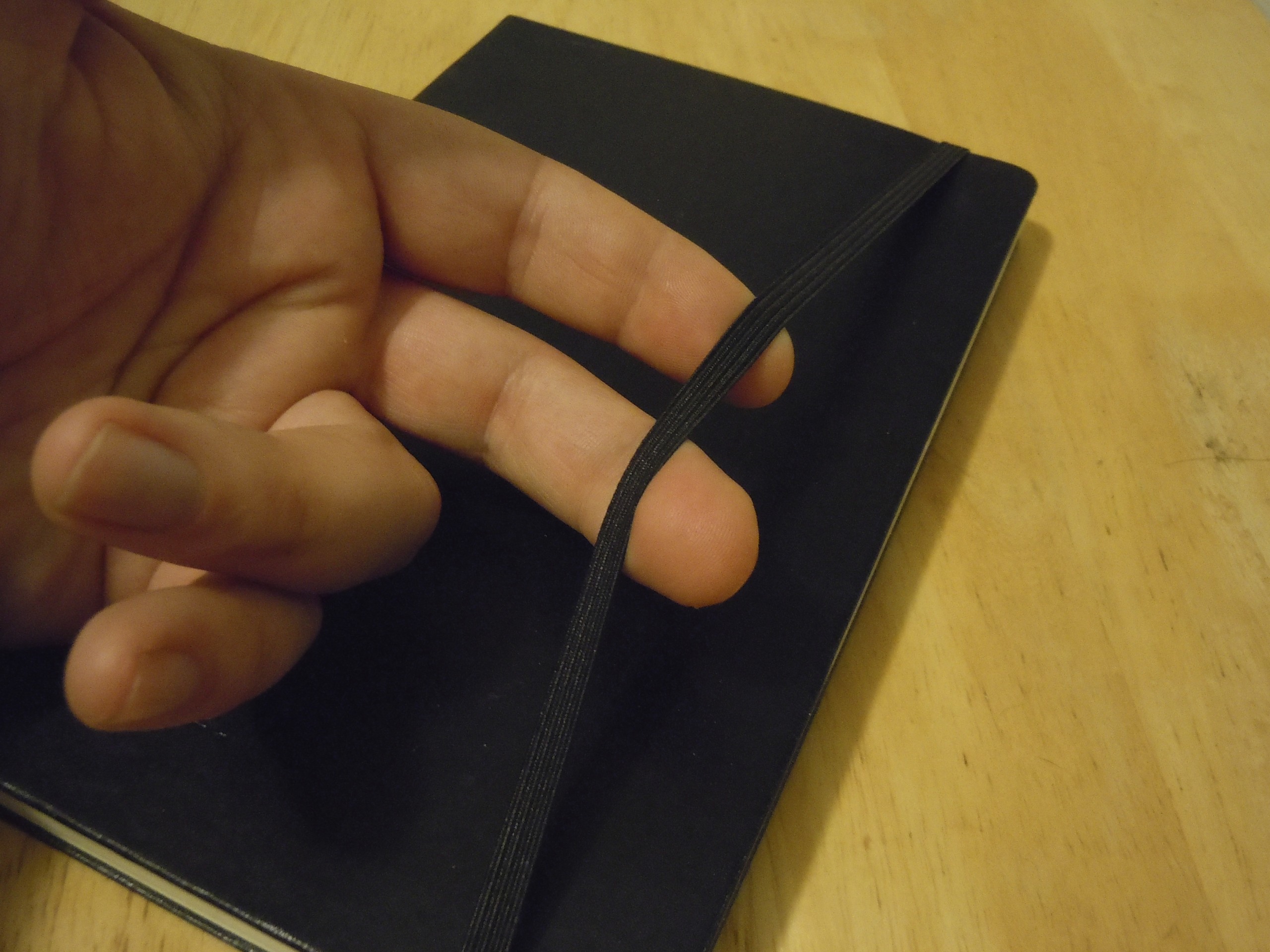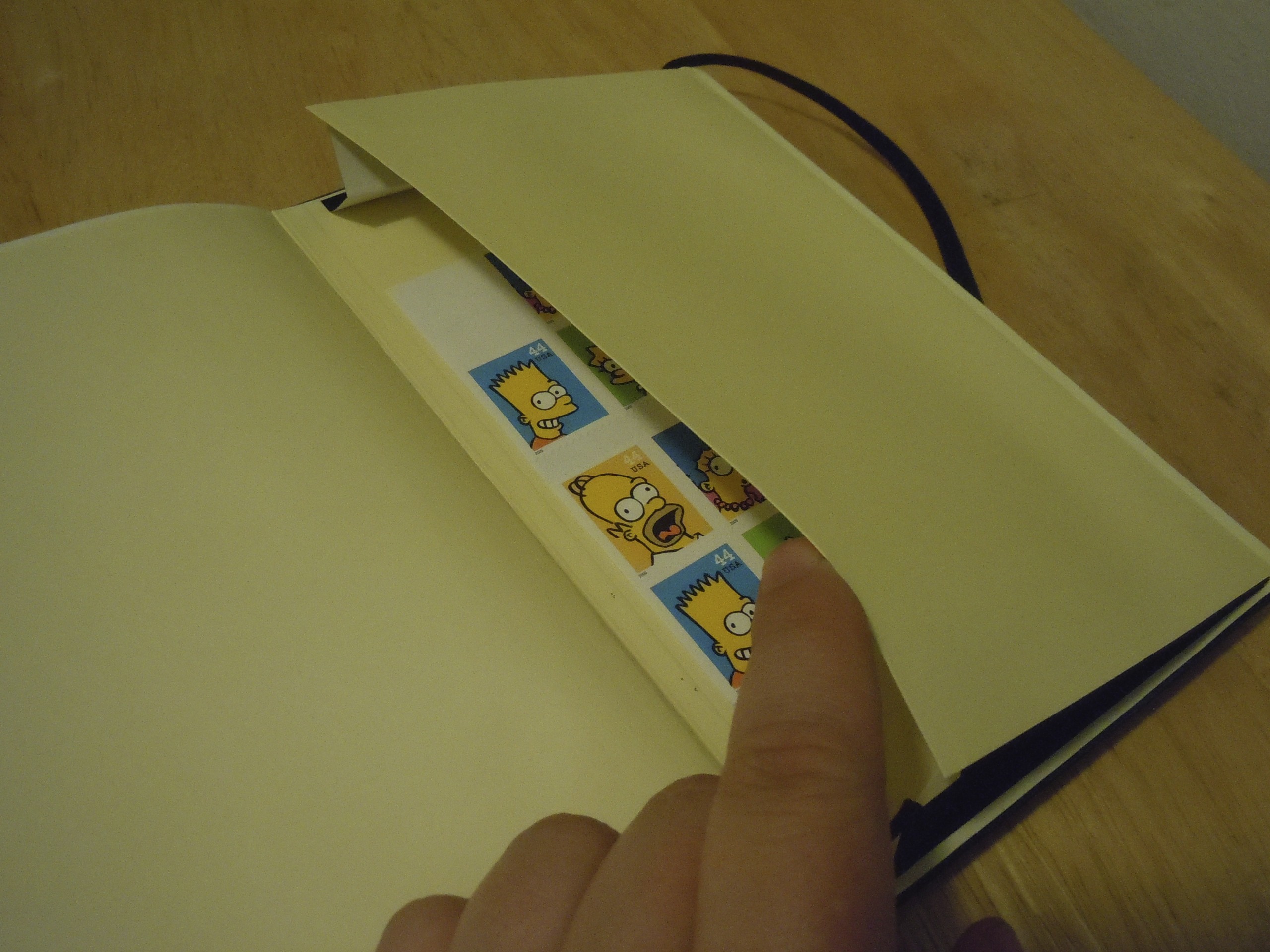
Moleskine: the one to beat
Of all the notebooks on the market, none is so celebrated or debated as the Moleskine. Loved by many, there are at least a half dozen websites devoted solely to the iconic notebook, and a Google search on the keyword «moleskine» produces (at this writing) over four and a half million results. No other brand of notebook has achieved the same level of repute or notoriety.
I’m not here to say that Moleskines are the best notebooks, but they are the standards by which most other notebooks are judged. So don’t be surprised when future editions of The Sunday Papers use the Moleskine as a measuring stick. Moleskines are, for all their faults, the King of Notebooks. They maintain a prestige point in the market due in part to the myth that surrounds them, in part to good design and materials, and in part to the attention paid to the needs of the users.
Those new to the Moleskine may balk at the expense, and with good reason. It seems bizarre that anyone would pay eighteen bucks for a notebook when a Mead composition book can be obtained in any drug store for under two dollars. It’s an easy conclusion to which one can jump: it must be some luxury item that only someone with more money than brains would fall for.
I’ve no doubt that’s what it is for some people. Moleskine’s marketing is all about the mystique and ambiance, tying the current product to the notebooks used by luminaries in the writing and artistic worlds. Van Gogh and Hemingway may well have used small black notebooks in their days but anyone who thinks they were made by the same company that makes today’s Moleskine has been sold a bill of goods.
So why would someone who isn’t just buying in to the hype buy one of these notebooks? There are several excellent features that the Moleskine notebooks sport:
Oilskin cover
The cover of the Moleskine is a durable, stiff material that looks handsome and professional. It is not as flashy or extravagent as a leather cover for a notebook. The notebook is protected by a cover more substantial than that of any composition notebook. This is a notebook meant to last and survive the rigors of travel, being stuffed into messenger bags, used as coasters, and so on. This feature earns Moleskine points both for practicality and style.
Elastic enclosure
The cover will stay closed when the elastic band is keeping it closed. This protects the contents and generally keeps things neat. The elastic bands are of good quality, unlike the elastic bands I’ve seen with some other notebooks. I’ve had some Moleskines for years on which the bands still snap just like the day they were new. If you’re going to have this kind of feature on a notebook, it had better be of decent quality. It’s pretty sad when the elastic holding your notebook closed gets stretched out.
Bookmark
It’s a small touch but handy. Having a bookmark built in to the Moleskine makes it easy to find your place again, or to mark an important note you wish to return to after time. It doesn’t take a lot. Some notebook makers take this a step further and include tabs that can be clipped to multiple pages, or multiple bookmarks sewn in to the binding. Moleskine does not. You get the one bookmark to hold your place and that’s the end of the story.
Pages
Yes, every notebook has pages, but the Moleskine has a pleasing cream-colored paper that makes the notebook literally easy on the eye. The grey lines are spaced more tightly than most notebooks, at 6mm between lines. While this forces writing to be somewhat smaller than most users are used to, one gets used to it rather easily and has the advantage of fitting more words onto a page than one can with a standard composition book, despite the smaller page size (my preferred size is the 13×21 cm versionat 9×14 cm the pocket version is very pocketable but not so handy for extended writing.)
Folder
The folder in the back page of the Moleskine makes the notebook truly handy. I use mine to hold postage stamps, business cards, receipts, anything that I need to have with me while I’m out or until I get home. It saves me from having to keep these things elsewhere where they might be a nuisance. It’s an efficient and thoughtful touch. Many people keep things between the pages of notebooks anyway, but having a built-in pocket keeps things from falling out at inopportune times.
Paper quality
The Moleskine’s virtues exceed its high price in all areas but this one. Ironically, the Moleskine’s fatal flaw is the quality of the paper, where one would expect a high-end notebook to excel. Sadly, Moleskine’s paper quality fails to live up to the expectation.
The color, as already noted, is pleasing, and for someone who writes with a pencil or a ballpoint pen the paper quality might not be an issue. I, however, write with a fountain pen, and fountain pens use liquid ink. The paper of the Moleskine is generally poorly suited to fountain pen ink. The writing feathers, bleeds through the page and shows clearly on the other side. It is particularly frustrating because so much of the design of the Moleskine appeals to users of fountain pens. It calls to the sensibilities of an earlier generation finding upper-crust virtue in older technology. Put bluntly, both the Moleskine and the fountain pen tend to appeal to persons with money and a nostalgic temperment.
It would therefore be a natural pairing to use a fountain pen with a Moleskine notebook. This is why it is so troubling to see the quality of the paper bring down the overall appeal of this notebook. Purportedly this was not always the case, but the quality control has suffered since production of the notebook with European charm was outsourced to Chinese binderies.
So while Moleskine may reign as the king of the notebook hill, Moda & Moda (makers of the Moleskine) have left the throne open to the attacks of usurpers.
Over the next few weeks, The Sunday Papers here at Monochromatic Outlook will look at several of these contenders. Piccadilly, Canteo, Leichturm, Rhodia, and others produce notebooks for the same niche market, each with their own sets of benefits and pitfalls. Coming March 27th: a review of the Canteo notebook from Switzerland.



Sketchbook?
I have tried many many different notebooks, and keep coming back to the Moleskine. Among “regular” notebooks, I’ve found that the paper quality of the Moleskine is just right for me. I prefer Gel pens. The smooth texture of the notebook pages makes writing very comfortable. The Gel ink doesn’t bleed through.
For Fountain Pen writing, have you tried the Moleskine Sketchbook? (not the notebook) I haven’t purchased any, but when browsing at bookstores, I notice that the pages are significantly thicker, and would probably keep fountain ink from bleeding through so much. There is also a watercolor notebook, but that would probably be too heavy for your needs.
Moleskine paper
Yes, with gel pens the Moleskine should be just about the perfect notebook. I don’t have any moral opposition to gel pens, but they aren’t what I write or draw with. Moleskines tend to have a nice surface texture for writing. The biggest problem is that the paper is so inconsistent. The characteristics it has on one page may be totally different on the next page. That’s a big problem for me.
I do have one of the sketchbooks with the heavier paper around here somewhere. I haven’t started doing anything with it yet; it’ll probably get started when my current regular-weight non-ruled Moleskine sketchbook gets finished.